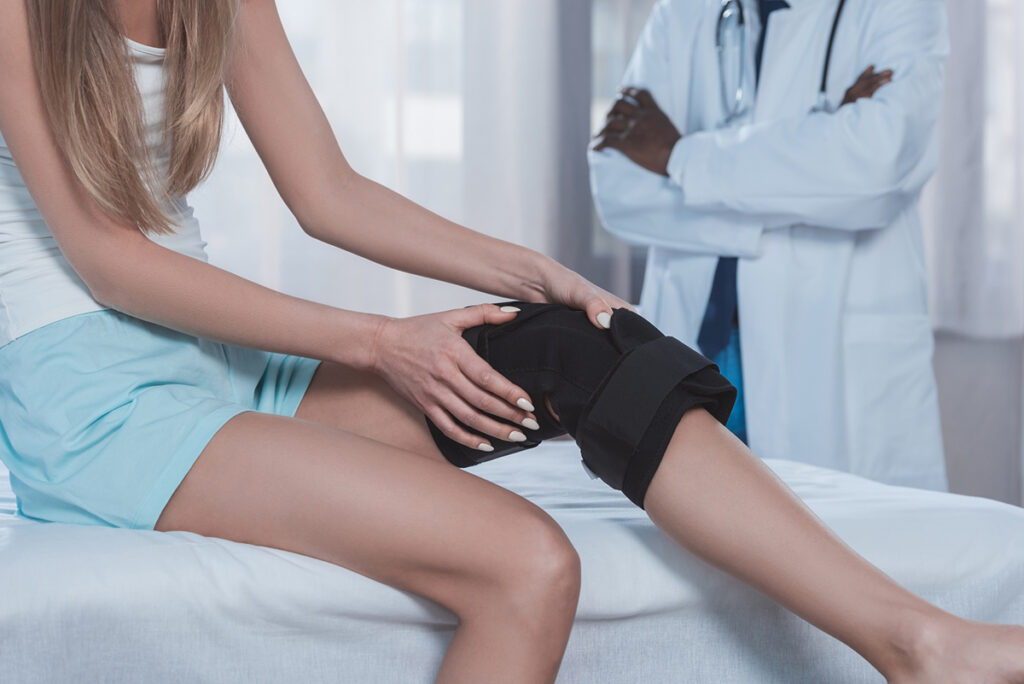
Torn ligaments and injured joints can render a person immobile. Non-operative rehabilitation is a non-invasive way to return you to daily activities safely. Physical therapy will guide you through progressive steps designed to strengthen the affected area and return to normal functioning over time. Rehabilitation typically happens in three phases. Therapists will personalize each program depending on the patient’s needs and activity goals.
What activities should I avoid after tearing a ligament?
Following a sprain, which is a tearing of some of the fibers in a ligament, you want to avoid anything that overextends the affected joint. For torn knee ligaments, pain-free ROM and isometric strengthening is the first order as guided by your therapist. You don’t want to start more vigorous exercises too early on in the rehabilitation process, or re-injury may occur.
Phase One – Increase Protection and Decrease Pain
The first four to six weeks are designed to protect the affected area and decrease pain and swelling. The first phase requires multiple therapy sessions per week. Many clients require the use of a brace and/or crutches. Therapists will educate you on how to use assistive devices and will begin manual manipulation to increase mobility. You will also start light exercises such as hip activation, ankle pumps, and isometrics.
Phase Two – Regain Strength and Mobility
You will most likely begin to wean off the crutches in this phase. Your therapist will continue hands-on manipulation for mobility support. You will introduce new exercises such as lunges, squats, and leg presses to build strength and flexibility. Riding a stationary bike is another way to workout injured knees. Phase two aims to return to a full range of motion and improve stability and gait.
Phase Three – Ease Back to Normal Function
Typically, it’s safe to stop using the brace after about 12 weeks of non-operative rehabilitation. Your physical therapist will direct the adding of resistance to your leg presses and guide progression to more advanced lunges and squats. In phase three, we aim to return to full functioning and meet your doctor’s clearance criteria.
Getting Back in the Game after Non-Operative Rehabilitation
Your physician will tell you when you’ve met clearance criteria to return to functional activities. When returning to sports drills, always listen to your body. Pain and resistance are signs that your knees are not quite ready. Avoid pushing hard too soon. Over-exertion can cause re-injury. Returning to training or work takes more than physical healing. There is a psychological element to recovering from injury as well. You need to be able to trust the injured part. Physical therapy takes a holistic approach to helping you get back in the game.
Non-operative Rehabilitation in Bergen County New Jersey
Churchill Orthopedic Rehabilitation offers rehabilitation options without surgery for torn ACL, PCL, and MCL. Our highly-trained physical therapists will work with you to design a program that meets your personal recovery goals. Schedule a consultation today.
